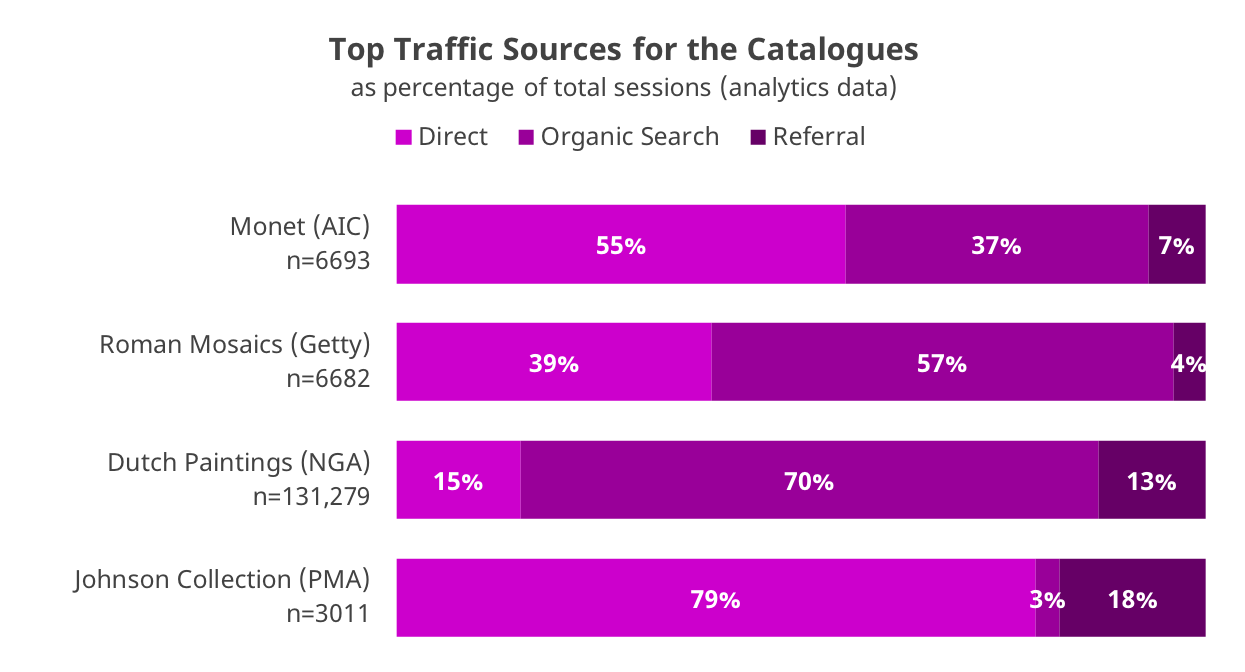How are users finding the catalogues?
Analytics data collected across four catalogues (one from each institution) show that the vast majority of visitors arrived through an organic search or direct access. The balance of these two sources, however, varied greatly by institution. The high percentage of direct traffic to the PMA catalogue may be due to internal staff dominating use of the catalogue in the early months after its launch, but IP address filters would have to be added to determine if this is in fact the case.
Google Analytics tags a traffic source as “direct” when the user’s browser doesn’t record any referral information on the session. This could mean the user typed the catalogue url directly into their browser or used a bookmark to access the site. In this case, the user visiting the catalogue is already aware of its existence. However, untagged links from emails, documents (such as PDFs), and mobile apps are also categorized as direct traffic by Google Analytics, which can make this category difficult to interpret. Ensuring that email marketing campaigns use Urchin Tracking Module (UTM) codes to tag links is one way to remove some of the confusion from direct traffic.
Google Analytics tags a traffic source as “organic search” when a user arrived after using a search engine such as Google or Bing. These users may be arriving at the digital catalogues after conducting a search for an artwork or other topic of interest.
Referrals (links to the catalogue posted elsewhere online) made up a smaller percentage of site traffic for the catalogues and is one indicator of the “buzz” about the catalogues on the internet or the success of various marketing efforts. Links to the catalogues from library databases also show up as referrals, although this is not a strong driver of traffic at the moment. (See How can the catalogues be marketed more effectively?) Those who accessed the catalogues by referrals were directed from a diverse range of sources. For the Dutch Paintings catalogue, the greatest referral source was connexus.com, an education management system. The Johnson catalogue’s biggest referrer is Digital Public Library of America, a database of digital resources available on the web. Referral visitors to the Monet catalogue came most often from Guide Labreuche, followed closely by Google Arts & Culture. The Roman Mosaics catalogue’s largest referrer is the Getty’s own website.
Knowing which sites are posting links to the catalogues can help these four institutions as well as others generate ideas of where to promote the catalogues. (A list of the top 10 referrers for the catalogues can be found in Appendix A: Further Analyses — Top Referring Sites.) Internal promotion can also help drive traffic, as the Getty’s data shows and as one focus group participant mentioned as well.

